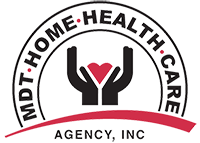Medicare and Medicaid are both government programs that help pay for health care. However, the benefits, costs, and eligibility requirements are different.
Medicare basics
Medicare is a federally funded program available to most U.S. citizens and permanent legal residents who have lived continuously in the country for five years or more and are age 65 or older.
People younger than 65 may also be eligible for Medicare if they:
- Have received at least 24 months of Social Security disability benefits or a disability pension from the Railroad Retirement Board (RRB).
- Have permanent kidney failure and need routine dialysis or a kidney transplant.
- Have amyotrophic lateral sclerosis (Lou Gehrig’s disease).
To qualify for premium-free Medicare Part A, you or your spouse need to have worked at least 10 years and paid Medicare payroll taxes while working. Medicare Part B has a premium that most people pay. To cover additional costs or provide more health-care services, you may enroll into a Medicare Prescription Drug Plan (Part D) or a Medicare Advantage plan (Part C). Medicare Advantage plans and Medicare Prescription Drug Plans are offered by private Medicare-approved insurance companies, and costs, coverage details, and availability may vary among plans.
Medicaid basics
Medicaid is jointly funded at the state and federal levels. Medicaid supports low-income individuals and families by covering costs associated with both medical and long-term custodial care for those who qualify. Some of the benefits covered under Medicaid overlap with Medicare, such as inpatient and outpatient hospital care and doctor services. However, depending on the state, Medicaid may also offer coverage that is not included under Original Medicare, such as personal care, optometry services, and dental services. Also, the service providers (such as hospitals and doctors) available to people using Medicaid are often different than those available to people using Medicare.
Eligibility for Medicaid is means-based, and the program has strict income eligibility requirements that vary from state to state. The Affordable Care Act expanded Medicaid eligibility levels in some states beginning on January 1, 2014. For more information on current qualification requirements, individuals should call their State Medical Assistance (Medicaid) office or visit Medicaid.gov.
Services covered under Medicaid
Each state runs its own Medicaid programs and determines which services are included. However, all states are required to provide certain mandatory benefits. According to Medicaid.gov, these mandatory benefits generally include services such as:
- Certain inpatient and outpatient hospital services
- Early and Periodic Screening, and Diagnostic, and Treatment (EPSDT) services for children
- Nursing facility services
- Home health services
- Doctor’s services
- Rural health clinic services
- X-ray and laboratory services
- Family planning services
- Midwife services
- Freestanding Birth Center services
- Certified pediatric and family nurse practitioner services
- Tobacco cessation counseling for expectant mothers
In addition to the above list of mandatory benefits, states can also choose to provide Medicaid coverage for optional benefits like occupational or physical therapy services; speech and hearing services; or respiratory care services.
Dual eligible: qualifying for Medicare and Medicaid
Beneficiaries who qualify for both Medicaid and Medicare Part A and/or Part B are known as “dual eligible.”
If you are dual eligible, you may qualify for benefits through state-run Medicare Savings Programs(MSPs), which provide coverage for certain Medicare premiums, deductibles, and copayments. While the type of benefits available depends on the dual eligible individual’s income level and the specific MSP, it is possible for Medicaid to cover all out-of-pocket expenses. Individuals who qualify for full Medicare coverage are considered Full Benefit Dual Eligible (FBDE).


